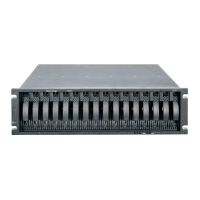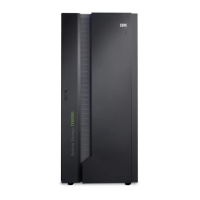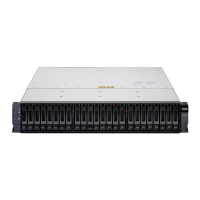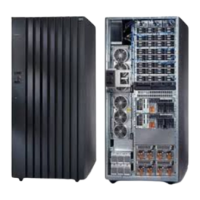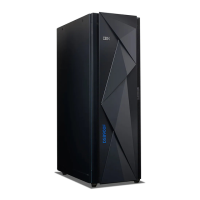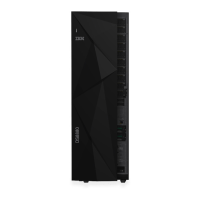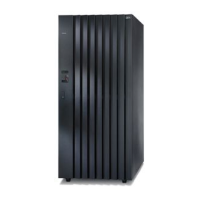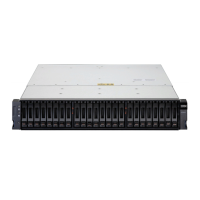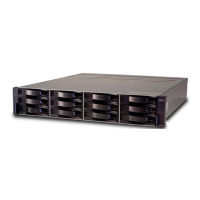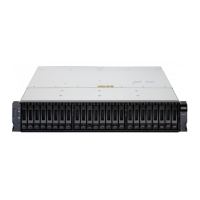
Do you have a question about the IBM DS5100 and is the answer not in the manual?
Title of the manual detailing installation, usage, and maintenance procedures.
Describes warnings for potentially lethal, hazardous, or data-damaging situations.
Introduces the storage subsystem, its models, and provides an overview of its capabilities.
Explains Fibre Channel, SATA, and iSCSI technologies used in storage connectivity.
Details subsystem features, clustering support, and provides an inventory checklist.
Covers installation site requirements, physical dimensions, weight, and environmental conditions.
Specifies temperature, humidity, altitude, and airflow requirements for operation.
Details site power, wiring, AC requirements, heat output, airflow, and cooling.
Summarizes the installation process and covers handling static-sensitive devices and general preparation.
Details steps for preparing the installation site and the rack cabinet.
Describes the main hardware components of the storage subsystem.
Details RAID controllers, their ports, and connection types like Fibre Channel and iSCSI.
Details the process of installing the DS5100 and DS5300 chassis into the rack.
Provides instructions for mounting the DS5100 and DS5300 onto the installed support rails in a rack cabinet.
Explains the use and handling of SFP modules and fiber-optic cables for connectivity.
Provides guidelines for handling fiber-optic cables to prevent damage and ensure proper performance.
Details the procedure for installing and removing SFP modules from controller ports.
Ensures optimal operation by updating software, firmware, and checking compatibility.
Provides preferred cabling topologies for connecting storage expansion enclosures, showing redundant paths.
Describes the cabling scheme where controller drive ports connect to specific ESM ports without trunking.
Details the cabling scheme for EXP5060 enclosures enabling drive-side trunking for throughput and redundancy.
Determines how host systems connect via Fibre Channel, including direct or switch connections.
Provides examples of DS5100/DS5300 host Fibre Channel configurations for redundancy.
Explains host-agent (in-band) and direct (out-of-band) management approaches.
Details the host-agent method requiring software installation on the host server for management.
Describes the direct Ethernet connection method for managing the storage subsystem.
Covers best practices for operation and the procedure for performing a Health Check.
Guides on updating firmware and using troubleshooting tools like LEDs and Recovery Guru.
Explains how to interpret the status of storage subsystem components using LEDs.
Provides step-by-step instructions for powering the storage subsystem on and off.
Explains how the storage subsystem might shut down unexpectedly and how to restore power.
Details the procedure for shutting down the storage subsystem during emergency situations.
Provides precautions to prevent damage from static discharge when handling components.
Describes LED behavior during single and multiple component failures for safe removal.
Provides a step-by-step procedure for replacing a RAID controller.
Provides a procedure for replacing a power supply and fan unit FRU.
Details the procedure for replacing the interconnect-battery unit, emphasizing safety and controller status.
Guides on replacing a backup battery pack when indicated as failed by the DS Storage Manager client or LEDs.
Provides instructions for replacing an SFP module in a controller, including handling precautions.
Covers initial checks using LEDs, DS Storage Manager, and diagnostic tools.
Provides guidance on using DS Storage Manager, symptom-to-FRU index, and Recovery Guru for troubleshooting.
Lists documentation libraries for DS Storage Manager and various DS subsystems.
Provides fields to record essential system identification and configuration details.
Offers templates for accurate placement of support rails and components in a rack cabinet.
Details safety certifications and general requirements for installing IBM products in non-IBM racks.
Provides EIA standards and dimensions for rack cabinets compatible with IBM products.
Explains keyboard operations for navigating and using DS Storage Manager software.
States compliance with FCC rules for Class A digital devices and interference.
Declares compliance of the Class A digital apparatus with Canadian ICES-003.
Warns about potential radio interference from Class A products in domestic environments.
Provides approval information for indirect connection to UK public telecommunication systems.
Confirms product conformity with EU directives on electromagnetic compatibility.
Provides a warning statement for Class A devices regarding potential radio interference in Taiwan.
Details German compliance with EU directives on electromagnetic compatibility for Class A devices.
